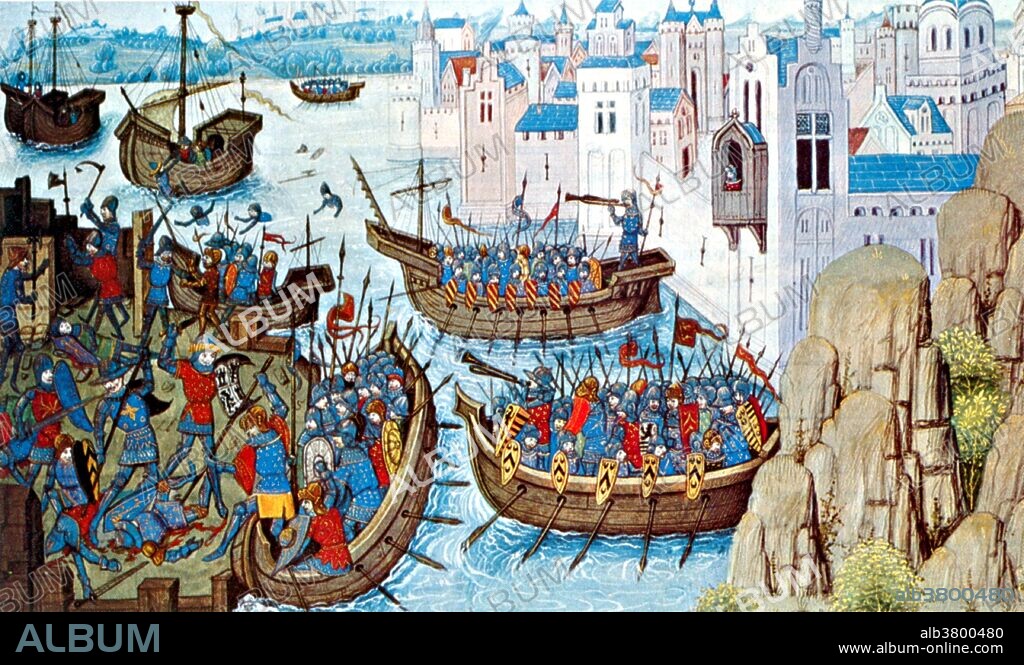alb3800480
Alexander the Great, Siege of Tyre, 332 BC

|
Ajouter à une autre Lightbox |
|
Ajouter à une autre Lightbox |



Avez-vous déjà un compte? S'identifier
Vous n'avez pas de compte ? S'inscrire
Acheter cette image.
Sélectionnez l'usage:

Titre:
Alexander the Great, Siege of Tyre, 332 BC
Légende:
Voir la traduction automatique
The Siege of Tyre was orchestrated by Alexander the Great in 332 BC during his campaigns against the Persians. The Macedonian army was unable to capture the city, which was a strategic coastal base on the Mediterranean Sea, through conventional means because it was on an island and had walls right up to the sea. Alexander responded to this problem by first blockading and besieging Tyre for seven months, and then by building a causeway that allowed him to breach the fortifications. It is said that Alexander was so enraged at the Tyrians' defense and the loss of his men that he destroyed half the city. According to Arrian, 8,000 Tyrian civilians were massacred after the city fell. Alexander granted pardon to all who had sought sanctuary (safety in the temple), including Azemilcus and his family, as well as many nobles. 30,000 residents and foreigners, mainly women and children, were sold into slavery.
Personnalités:
Crédit:
Album / NYPL/Science Source
Autorisations:
Taille de l'image:
4800 x 2867 px | 39.4 MB
Taille d'impression:
40.6 x 24.3 cm | 16.0 x 9.6 in (300 dpi)
Mots clés:
4E SIECLE AV. JC • 4EME S AV NE • CÉLÈBRE • CELEBRITE • CHEF D'ARMEE • CONQUERANT • CONQUISTADOR • ÉVÉNEMENT • GUERRE • HOMME • ILLUSTRATION • MACEDONIAN • MÉDITERRANÉE • NAVAL • NAVALE • PERSONNAGES • PERSONNALITÉS • PERSONNE
 Pinterest
Pinterest Twitter
Twitter Facebook
Facebook Copier le lien
Copier le lien Email
Email
